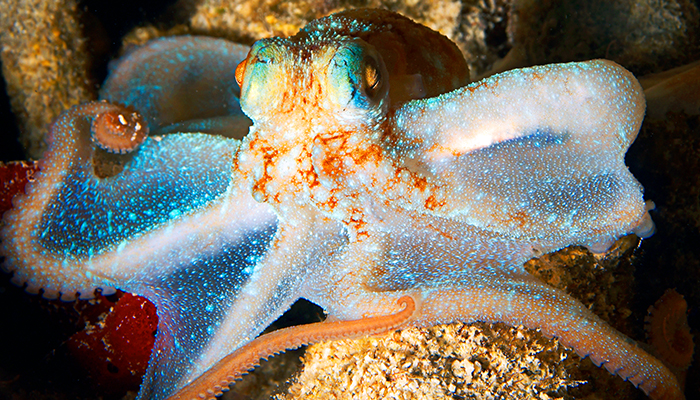Why Do Cephalopods Use Ink?
Discover what’s in the ink of an octopus and why it’s a perfect diversion

When I think about cephalopods using their ink, I imagine a movie blockbuster with a lot of action and suspense. The hero is cornered, and if they cannot find a way out, then all the world will be doomed. What our hero needs is the perfect diversion—something to quickly distract the evil villain so our hero can escape in the nick of time.
Thankfully, our cephalopod heroes—the octopus, cuttlefish and squid—have the perfect diversionary tactic built right into their bodies and they can use it at a moment’s notice. What is this perfect diversion? Their ink!
Cephalopods use their ink to scare or distract predators so they can escape before being seen (or eaten). The ink is ejected from the ink sac within the cephalopod’s body. The ink is made of melanin and mucus. Melanin is also in humans and is responsible for the color of our hair and skin.
Is the ink poisonous? No, it is not. That is a common misconception. Cephalopods do have venom glands, but they are not the same as the ink sacs. And not all cephalopods have ink sacs. It is absent in nautiluses and the deep-sea octopus group Cirrina, which includes the dumbo octopus.
The ink also has the ability to hurt creatures that come into contact with it. There is some evidence that tyrosinase (a melanin-producing component) can cause irritation when “inked” into a predator’s eyes. It can also disorient and confuse the predator’s sense of smell and taste. If an octopus doesn’t get out of the way of its own potent ink cloud, it could actually die! But the ink cloud could also help other ocean life by warning other species that danger is nearby (giving them time to escape).
Unlike other species, octopuses don’t have a hard shell or sharp spines to protect themselves—so the ink is one way they avoid predators and live another day. Learn about another way cephalopods protect themselves: color-changing chromatophores.
You Can HELP
Climate change could negatively affect cephalopods through warming temperatures that disrupt egg development, acidification that harms prey items and hypoxic zones that decrease available habitat. Consider making a donation to Ocean Conservancy today—give today and make a difference for the future of our ocean!